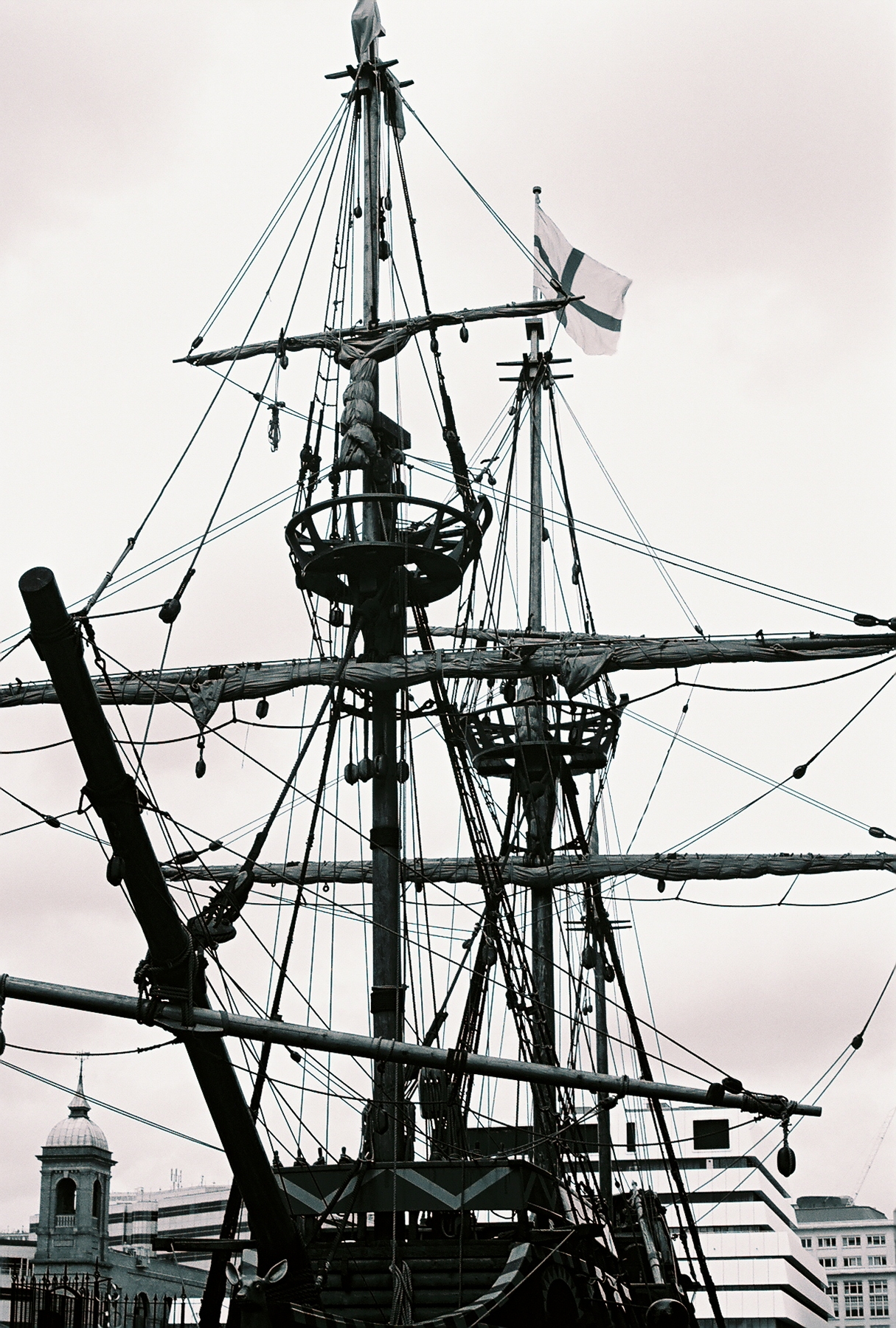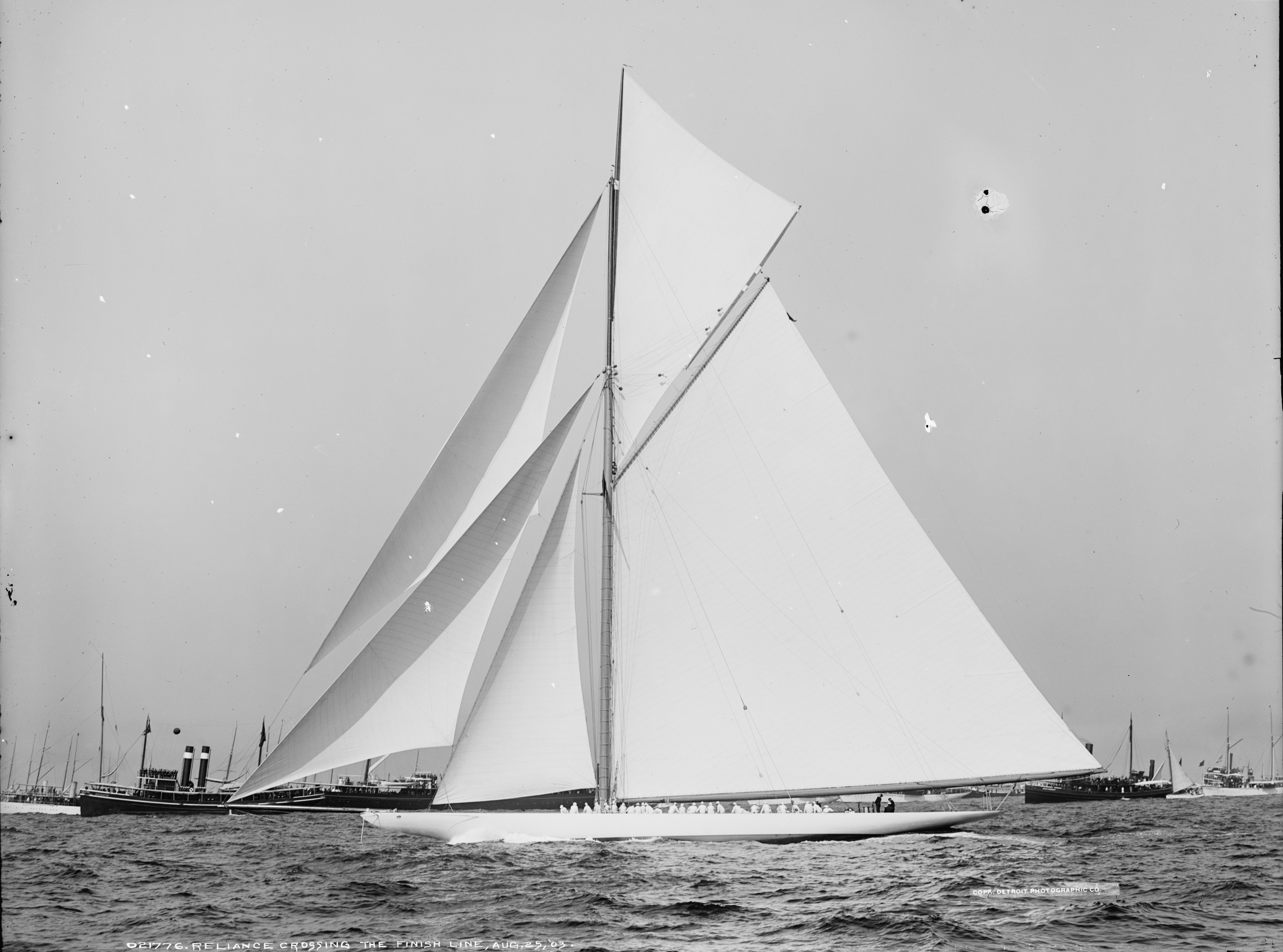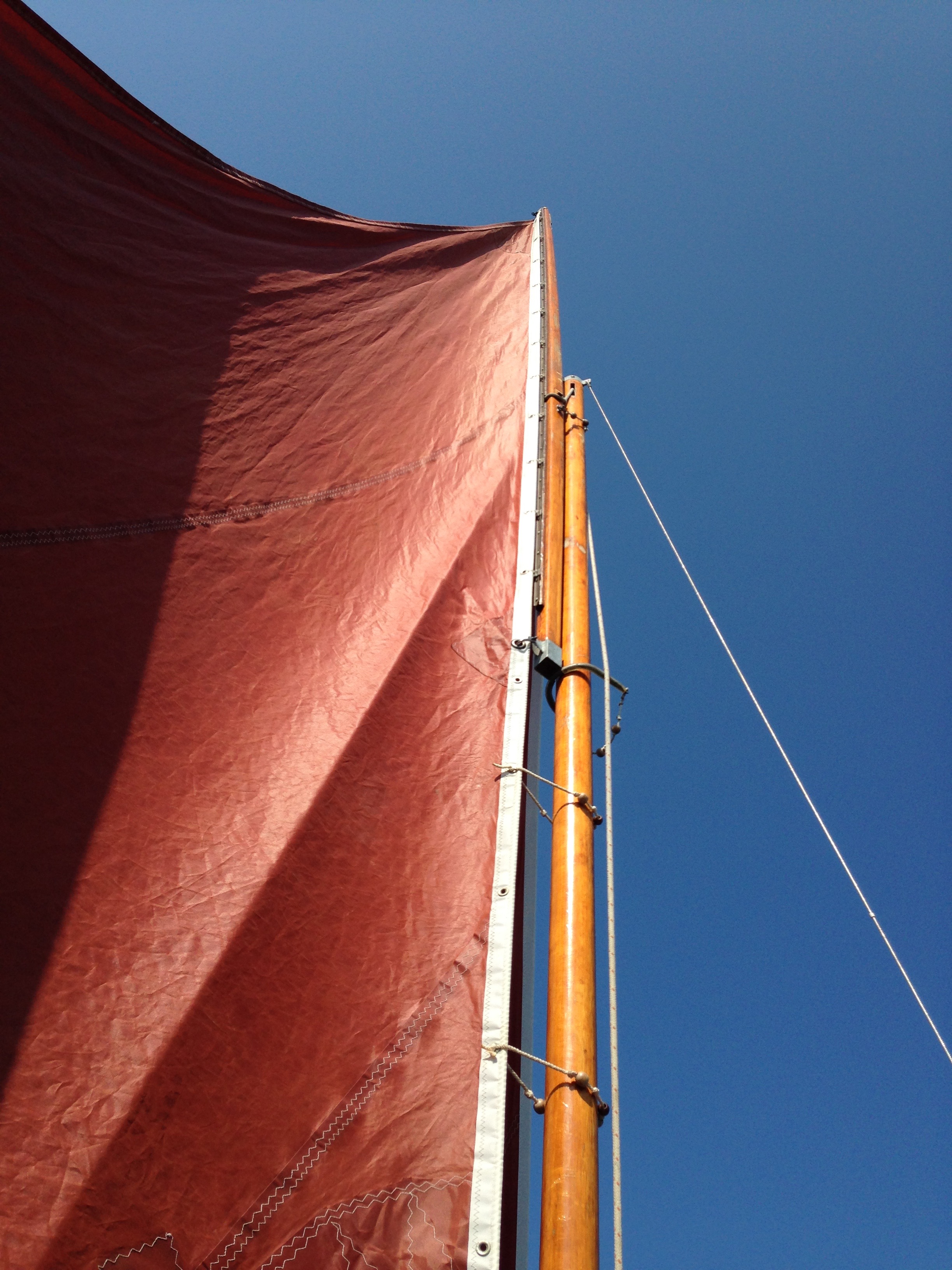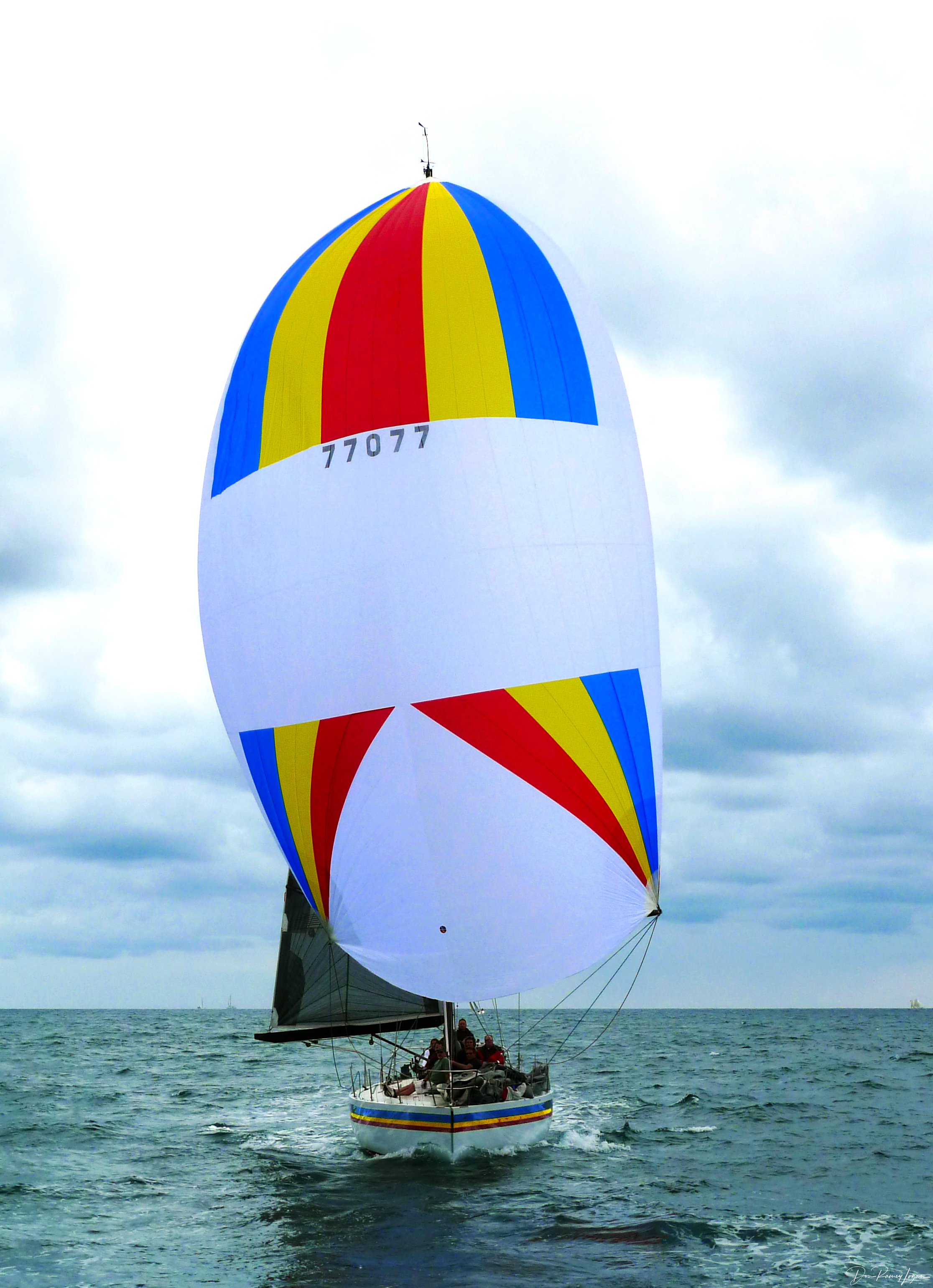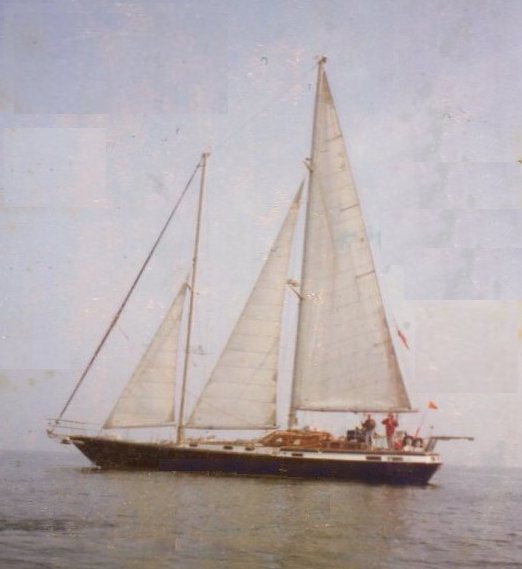|
Parrel Beads
Parrel beads (also spelled parral or parrell) are an element of sailing rigging. They act as roller bearings on a parrel, which is a rope or wire strop that typically fastens one spar to another along which it must have some freedom of movement. An example of this is at the jaws of a gaff on a gaff rigged or gunter rigged craft. This allows the gaff to slide up and down the mast as sail is hoisted or lowered, and allows some rotation around the mast as the sail is sheeted in and out to allow for different wind directions. Another example is on the tack of a spinnaker rigged over a furled jib. Construction A set of parrel beads is formed from small balls, size depending on the application, threaded on a piece of small line and secured with a stopper knot Stopper may refer to: * Bung, a plug used to stop the opening of a container ** Laboratory rubber stopper, a specific type of bung * Plug (sanitation), used to stop a drainage outlet * Defender (association football), in so ... [...More Info...] [...Related Items...] OR: [Wikipedia] [Google] [Baidu] |
Sailing
Sailing employs the wind—acting on sails, wingsails or kites—to propel a craft on the surface of the ''water'' (sailing ship, sailboat, raft, windsurfer, or kitesurfer), on ''ice'' (iceboat) or on ''land'' (land yacht) over a chosen course, which is often part of a larger plan of navigation. From prehistory until the second half of the 19th century, sailing craft were the primary means of maritime trade and transportation; exploration across the seas and oceans was reliant on sail for anything other than the shortest distances. Naval power in this period used sail to varying degrees depending on the current technology, culminating in the gun-armed sailing warships of the Age of Sail. Sail was slowly replaced by steam as the method of propulsion for ships over the latter part of the 19th century – seeing a gradual improvement in the technology of steam through a number of stepwise developments. Steam allowed scheduled services that ran at higher average speeds than sail ... [...More Info...] [...Related Items...] OR: [Wikipedia] [Google] [Baidu] |
Rigging
Rigging comprises the system of ropes, cables and chains, which support a sailing ship or sail boat's masts—''standing rigging'', including shrouds and stays—and which adjust the position of the vessel's sails and spars to which they are attached—the ''running rigging'', including halyards, braces, sheets and vangs. Etymology According to the Encyclopædia Britannica Eleventh Edition "rigging" derives from Anglo-Saxon ''wrigan'' or ''wringing'', "to clothe". The same source points out that "rigging" a sailing vessel refers to putting all the components in place to allow it to function, including the masts, spars, sails and the rigging. Types of rigging Rigging is divided into two classes, ''standing'', which supports the mast (and bowsprit), and ''running'', which controls the orientation of the sails and their degree of reefing. Configurations differ for each type of rigging, between ''fore-and-aft rigged'' vessels and ''square-rigged'' vessels. Standing Standin ... [...More Info...] [...Related Items...] OR: [Wikipedia] [Google] [Baidu] |
Spar (sailing)
A spar is a pole of wood, metal or lightweight materials such as carbon fibre used in the rigging of a sailing vessel to carry or support its sail. These include yards, booms, and masts, which serve both to deploy sail and resist compressive and bending forces, as well as the bowsprit and spinnaker pole. In larger vessels during the age of sail, spare spars could be roped together to provide a temporary surface known as a "spar deck". These served as jury-rigged repairs for permanent decks, or as an additional platform under which to shelter goods or crew. The term was also informally applied to areas of the forecastle or quarterdeck where spare spars were stored by laying them flat against the existing decking. In the modern era the term has been used to describe the uppermost deck on flush deck Flush deck is a term in naval architecture. It can refer to any deck of a ship which is continuous from stem to stern. History The flush deck design originated with rice ships built ... [...More Info...] [...Related Items...] OR: [Wikipedia] [Google] [Baidu] |
Gaff Rig
Gaff rig is a sailing rig (configuration of sails, mast and stays) in which the sail is four-cornered, fore-and-aft rigged, controlled at its peak and, usually, its entire head by a spar (pole) called the ''gaff''. Because of the size and shape of the sail, a gaff rig will have running backstays rather than permanent backstays. The gaff enables a fore and aft sail to be four sided, rather than triangular. A gaff rig typically carries 25 percent more sail than an equivalent Bermudian rig for a given hull design. A sail hoisted from a gaff is called a gaff-rigged (or, less commonly, gaff rigged or gaffrigged) sail. Description Gaff rig remains the most popular fore-aft rig for schooner and barquentine mainsails and other course sails, and spanker sails on a square rigged vessel are always gaff rigged. On other rigs, particularly the sloop, ketch and yawl, gaff rigged sails were once common but have now been largely replaced by the Bermuda rig sail, which, in addition to bei ... [...More Info...] [...Related Items...] OR: [Wikipedia] [Google] [Baidu] |
Gunter Rig
Gunter rig is a configuration of sail and spars used in sailing. It is a fore and aft sail set abaft (behind) the mast. The lower half of the luff (front) of the sail is attached to the mast, and the upper half is fastened to a spar which is approximately vertical and reaches above the top of the mast. This spar is called a "yard", but it is common for some to confuse it with a "gaff" (as in gaff rig). The overall shape of a gunter sail is roughly triangular, so having a superficial resemblance to Bermuda rig. A gunter sail may also be called a "gunter lug" - a name which suggests developmental origins from increasing the angle of a high peaked standing lug. Gunter sails are sometimes described as "sliding gunter". Gunter rig is generally used in small sailing craft. One important advantage is that the shorter mast used with this rig usually fits within the hull when unstepped, together with the boom and yard. This is helpful for a dinghy that is towed behind a car, stored in ... [...More Info...] [...Related Items...] OR: [Wikipedia] [Google] [Baidu] |
Spinnaker
A spinnaker is a sail designed specifically for sailing off the wind on courses between a reach (wind at 90° to the course) to downwind (course in the same direction as the wind). Spinnakers are constructed of lightweight fabric, usually nylon, and are often brightly colored. They may be designed to perform best as either a reaching or a running spinnaker, by the shaping of the panels and seams. They are attached at only three points and said to be ''flown''. Nomenclature Informal names for a spinnaker are ''kite'' or ''chute'' (owing to their resemblance to a parachute in both construction and appearance). Boats may have more than one spinnaker, differentiated by a letter to indicate symmetric (S) or asymmetric (A) and a number to indicate size (with higher numbers indicating smaller size), e.g. ''A1'' would be a large asymmetric sail and ''S3'' would be a smaller symmetric sail. Operation A spinnaker is used for sailing with the direction of the wind. Symmetrical ... [...More Info...] [...Related Items...] OR: [Wikipedia] [Google] [Baidu] |
Roller Furling
Roller furling is a method of furling (i.e. reefing) a yacht's staysail by rolling the sail around a stay. Roller furling is typically used for foresails such as jibs or genoas. A mainsail may also be furled by a similar system, whereby the sail is furled within the mast or around a rotating boom (or around a rotating shaft within a boom). Although staysail roller-furling is effective and very common, in-mast or in-boom mainsail furling involves some compromises, and mainsail slab reefing gives a better sail shape. Methods The idea for a furling jib is usually attributed to Major E du Boulay in England who invented a device similar to a roller blind for reefing a jib. Major Wykeham-Martin used one of Boulay's rollers and improved the system by incorporating roller bearings in 1907 when the system was patented. The original castings were made by London-based toilet makers Bouldings. By the 1940s nearly every British cruising yacht was fitted with this furling system. An early v ... [...More Info...] [...Related Items...] OR: [Wikipedia] [Google] [Baidu] |
List Of Stopper Knots
A ''list'' is any set of items in a row. List or lists may also refer to: People * List (surname) Organizations * List College, an undergraduate division of the Jewish Theological Seminary of America * SC Germania List, German rugby union club Other uses * Angle of list, the leaning to either port or starboard of a ship * List (information), an ordered collection of pieces of information ** List (abstract data type), a method to organize data in computer science * List on Sylt, previously called List, the northernmost village in Germany, on the island of Sylt * ''List'', an alternative term for ''roll'' in flight dynamics * To ''list'' a building, etc., in the UK it means to designate it a listed building that may not be altered without permission * Lists (jousting), the barriers used to designate the tournament area where medieval knights jousted * ''The Book of Lists'', an American series of books with unusual lists See also * The List (other) * Listing (d ... [...More Info...] [...Related Items...] OR: [Wikipedia] [Google] [Baidu] |


